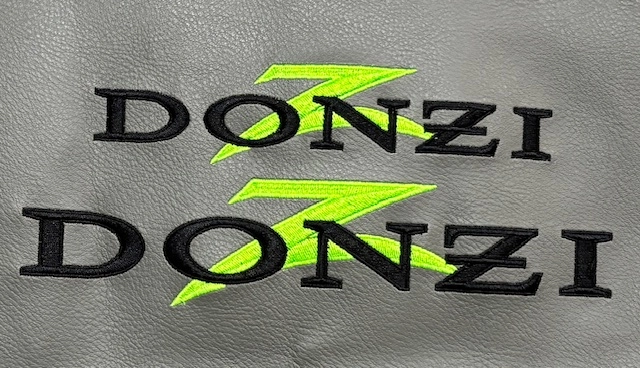The Art of Custom-made Needlework: Opening the Keys to Creating Unique and Memorable Styles
Needlework, a craft soaked in practice and artistry, holds within its elaborate stitches the power to transform material right into a canvas of one-of-a-kind expression. The keys to developing custom embroidery designs that captivate the eye and leave a long lasting perception depend on a delicate equilibrium of method, creative thinking, and focus to information. As we explore the globe of custom-made embroidery, we discover the nuanced interplay between string option, stitch intricacy, and layout customization that raises a simple garment to a job of art. Join us on a trip through the art of customized embroidery as we unravel the enigmas behind crafting absolutely remarkable and distinctive productions.
Choosing the Right Needlework Threads
When picking needlework strings, what essential aspects should you consider to make certain the ideal results for your custom-made styles? The option of needlework thread is crucial in determining the final result of your embroidered layout. One of the key considerations is the material of the thread. Various materials such as cotton, polyester, rayon, and silk offer varying levels of shine, durability, and structure. It is vital to choose a thread material that complements the textile you are embroidering on and straightens with the preferred appearance of the design.
Additionally, the weight or thickness of the thread plays a substantial role in the look of the needlework. Thicker strings can add dimension and appearance to your layout, while finer strings are ideal for intricate details and small message. Furthermore, thinking about the color fastness and washability of the string is critical to guarantee that your custom designs keep their high quality and vibrancy gradually. By meticulously reviewing these elements and selecting top quality strings that fulfill your particular requirements, you can enhance the aesthetic charm and longevity of your embroidered creations.
Exploring Various Stitch Techniques
To explore the realm of 'Discovering Different Stitch Strategies', one should grasp the ins and outs and subtleties that each stitching approach brings to the art of needlework. Various stitch strategies not only add visual passion however additionally add to the overall structure and measurement of the design. One preferred stitch strategy is the satin stitch, which includes closely jam-packed parallel stitches to develop a smooth and shiny surface, suitable for filling out forms and developing bold lays out.
On the other hand, the backstitch is a versatile technique commonly made use of for describing and including great information. It involves stitching backwards to develop a solid line of embroidery. Additionally, the French knot stitch adds a tactile component to layouts, excellent for producing distinctive accents like blossom facilities or decorative touches.
Checking out different stitch techniques allows embroiderers to play with light, shadow, and depth within their designs, elevating the visual appeal and artistic high quality of their needlework tasks. By understanding various stitching methods, one can unlock endless possibilities for producing unique and memorable customized embroidery items.
Incorporating Personalized Layout Components
Having explored the intricacies of different stitch techniques such as the satin stitch, backstitch, and French knot, the focus currently moves towards integrating personalized design components in customized embroidery tasks. Individualized layout components play a crucial function in making embroidery projects absolutely unique and memorable. One means to incorporate Bonuses customization is by including initials, names, or considerable dates to the layout. This not just includes a customized touch but additionally improves the nostalgic worth of the needlework piece.
One more method to integrate personalized layout elements is by consisting of symbols or concepts that hold unique significance to the recipient or mirror their rate of interests and personality. As an example, including a favored flower, pet, or hobby-related symbol can make the embroidery layout much more meaningful and personalized. Additionally, selecting shades that resonate with the recipient or straighten with the intended style can better boost the customization of the needlework job.
Mastering the Art of Shade Coordination

One trick aspect of color sychronisation is recognizing shade theory. This consists of knowing exactly how different shades communicate with each various other, the feelings they convey, and how they can be incorporated to produce visually enticing designs. By applying shade concept principles, embroiderers can produce harmonious color combinations that boost the overall appearance of the design.
Additionally, focusing on contrast is vital in shade coordination. Using contrasting shades can aid specific components of the design pop, improve clarity, and create a visually vibrant embroidery item. By understanding the art of shade coordination, embroiderers can elevate their styles and produce memorable items that resonate with clients and visitors alike.
Enhancing Structure With Advanced Embroidery Stitches
French knots, for instance, are ideal for adding small, increased dots to your style, resembling the look of beads bespoke linen suit or developing a textured surface area. Bullion knots, on the various other hand, can be used to create twisted, ropelike elements that add a lavish feel to the needlework. Seed sewing entails little, scattered stitches that can fill out areas with a polychromatic appearance, while see page turkey work develops cosy, dimensional accents evocative pet hair or vegetation. Explore these innovative needlework stitches enables you to press the boundaries of conventional needlework and create truly unique and aesthetically enticing appearances in your layouts.
Verdict
Finally, the art of personalized needlework entails a mix of selecting the right strings, checking out various stitch strategies, incorporating tailored style elements, understanding color coordination, and boosting appearance with advanced stitches. By recognizing and executing these crucial elements, embroiderers can produce one-of-a-kind and unforgettable layouts that display their imagination and skill. Needlework enthusiasts can open the secrets to developing beautiful and bespoke items that stand out and leave an enduring impression.